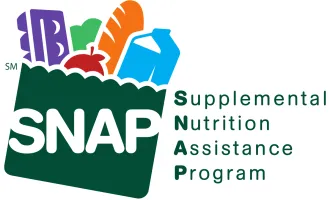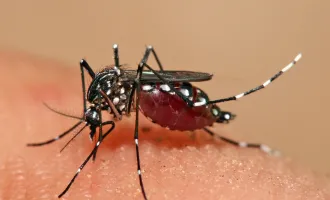This Date in UCSF History: UCSF, Genentech Battle
Originally published in Synapse - The UCSF student newspaper on May 20, 1999. The University of California has brought patent infringement charges against Genentech, a biotech company based in South San Francisco.
Genentech has been manufacturing a synthetic version of human growth hormone since 1985 under the trademarked name Protropin; it generates some $200 million a year in sales.
The University says that Genentech has been making Protropin using techniques that were developed by UCSF scientists, and is suing for use without permission.
Human growth hormone is a polypeptide that is made and secreted by the pituitary gland.
It has a host of activities, such as promoting the linear growth of bones, building up muscle mass, and kickstarting puberty. Deficiencies in this hormone can lead to short stature, muscle wasting, and delayed puberty.
Protropin is currently approved by the FDA to treat growth failure in children who have a deficiency in the pituitary’s production of growth hormone. It is also useful in ameliorating short stature associated with Turner’s Syndrome.
In the future, human growth hormone may be legally recognized for use in building muscle mass in cachectic individuals.
In the late 19705, researchers at UCSF began isolating DNA that encoded for human growth hormone from human pituitaries.
The polypeptide consists of 191 ammo acids, and several scientists were able to figure out the DNA sequence encoding for ammo acids 24 through 191. The scientists took this DNA, put it in a plasmid vector, and transformed bacteria with this foreign DNA.
Each time the bacteria divide, they replicate and synthesize both their own as well as the exogenous DNA. Huge amounts of human growth hormone can be made in this way.
The University filed for a patent
to protect this process of expressing ammo acids 24 through 191 in late December. Howard Goodman, John Shine, and Peter Seeburg were listed as the inventors. Two months later, the University applied for another patent claiming ammo acids 1 through 191, which the same inventors had deduced.
Lawyers on Genentech’s side are countering that ammo acids I through 191 were never made at the University.
While both UC and Genentech seem to agree that this is a case over infringement issues, Genentech is additionally arguing that UC’s patent is invalid.
They say that the patent claims too much yet does not give enough information to instruct other scientists on how to reproduce and use their purported invention.
And in this corner...
Lawyers for both parties began presenting their cases on April 13, 1999, in the Northern District Federal Courthouse in San Francisco before a nine-person jury, with Judge Charles Legge presiding.
It was upon the University’s request that a jury was brought to decide the outcome of this case.
The University has hired the law firm of Morrison and Foerster to handle its case. Gerald Dodson gave the opening statement and has been doing most of the talking on behalf of UC.
Genentech hired New York City-based Rogers and Wells, and though John E. Kidd introduced the case, they have taken much more of a lag team approach in representing their client.
On the day that Synapse attended, nine lawyers sat around the Genentech table, seven al UC’s, with aides in the gallery and audiovisual technicians thanking them. The entire left wall of the courtroom was lined with file cabinets belonging to UC and Genentech.
The jury sat along the right wall, Genentech-sponsored binders for referencing and note-taking perched on their laps.
Oversized charts obscured the audience’s view of the jurors. The jury must decide whether or not Genentech infringed upon UC’s rights. Genentech must show that the methods in their patents are different from those owned by UC.
Both sides are challenged with reducing scientific jargon into language that the jury can understand.
During opening statements, Kidd argued that Genentech was granted a patent distinct from the University’s.
He pointed to claim 6 of the University’s patent: “A recombinant DNA transfer vector comprises codons for human growth hormone.”
But Genentech’s patent — number 4,342,832 — shows how to make met-human growth hormone, not human growth hormone, according to Kidd. (Methionine is the initiating codon in the synthesis of the ammo acids that comprise met-hu-man growth hormone.)
History
Until the mid-1970s, furnishing human growth hormone for therapeutic purposes was a laborious and tedious process. The polypeptide was extracted from the pituitaries of cadavers.
Work leading up to the isolation of human growth hormone DNA, according to Dodson, began at UCSF in the mid-19705. Seeburg joined Goodman’s lab at UCSF in June 1975, and Shine followed in October of the same year.
They initially were working on isolating the DNA of human placental lactogen, went on to isolate growth hormone from rats, and finally took to isolating DNA from human pituitaries.
In February of 1978, they successfully identified human growth hormone, disclosed their invention (which all scientists contracted with UC must do) to the UCSF Patent Office, and subsequently filed for a patent.
In April of 1976, another former UC professor, Herb Boyer, and a venture capitalist named Robert Swanson founded Genentech.
They soon joined others who were looking to commercialize the production of human growth hormone. Swanson and Boyer sought a collaboration with the Swedish pharmaceutical company Kabigen, which was in the business of furnishing human growth hormone by extraction from cadavers.
Negotiations took place throughout the latter half of 1977, and Boyer announced a formal collaboration by January 1978.
Following the agreement, Genentech began recruiting scientists from the University of California. Seeburg joined the start-up on September 1978, becoming head of
Genentech’s human growth hormone project.
Swanson wrote to Goodman, requesting the DNA that Seeburg and his colleagues had worked on, but the University refused, its patent application awaiting approval.
Seeburg returned surreptitiously to his former lab on New Year’s Eve 1978 and retrieved the DNA.
After learning of the incident, the University warned Genentech not to use their DNA without permission. This was the DNA that encoded for ammo acids 24 through 191.
To complete the remainder of the human growth hormone DNA sequence, Genentech contracted with Los Angeles-based, biomedical institute The City of Hope to process ammo acids 1 through 23.
The plasmid, containing information to code for all 191 ammo acids, is called PGHGIO7.
They made a public announcement of this plasmid in July 1979, received U.S. patent 1832 which claimed this technology on August 3, 1982, and got FDA approval to market their synthetic hormone for therapeutic purposes in 1985.
Genentech has been selling Protropin since October of that year.
In 1987, Eli Lilly of Indianapolis, Indiana, came out with their own version of synthetic human growth hormone, known as Humatrope, for which they received permission to use some of the instructions contained in the University’s patents.
Dodson brought up before the court that patent 1832 has in it the work of inventions produced at the University of California.
Even after a warning not to use the DNA, he argued, Genentech violated licensing protocol and is guilty of infringement.
Kidd acknowledged that Genentech had in their possession the DNA that Seeburg had taken from his former lab, but he insisted that Genentech never used technology developed at UCSF.
He objected to the portrayal of Seeburg as “sneaking” into his former lab, explaining to the jury that “there was nothing wrong with taking that material. He didn’t steal anything.”
He pointed out that Genentech actually received their patent (‘832, the one that the University insists contains their technology), before the University received 1877. UC’s application was filed on April 19, 1978, while Genentech’s was filed on July 5,1979.
During the next three years, the patents were co-pending and were being reviewed by the same patent examiner at the United States Patent Office.
This patent examiner, he said, found their claims to be different enough to grant them each separate patents.
Genentech received approval on their application on August 3, 1982, while UC was granted theirs on December 14, 1982.
He made this distinction between when the applications were filed and when they were approved because infringement charges are moot until the patents are issued.
The jury’s role
The trial is expected to end this week, according to Dodson’s office. Closing arguments are scheduled for Thursday morning, May 20.
The jury must decide if Genentech’s production plasmid, PHGH4O7, infringes claims 6,7, or 8 of UC’s patent number 4,363,877.
They also must decide if the patent enables one of ordinary skill in the art to make and use the invention of claims 6, 7, or 8.
All nine jurors must be in agreement.



